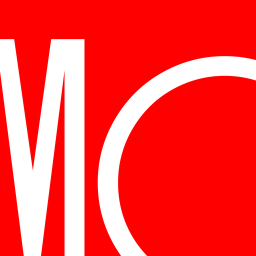Morningstar Runs the Numbers
We take a numerical look through this week's Morningstar research. Plus, our most popular articles and videos for the week ended Sept. 15.
Inspired by Harper's Index (with a tip of the hat to FiveThirtyEight's Significant Digits blog), Morningstar Runs the Numbers uses a numbers-based approach to highlight recent Morningstar research, along with some outside news stories.
$55 David Meats laid out the case that the crude oil market is going to face oversupply next year. This leads to our energy teams midcycle pricing forecast of $55 a barrel West Texas Intermediate, below many other forecasts. He thinks U.S. production will be the driver of the supply:
Shale growth is the main component of the glut we anticipate after March 2018. Huge growth in that arena is near certain next year, and this onslaught of new production will probably coincide with the potential expiration of OPEC's voluntary curtailments, overwhelming crude markets once again.
55
In the Dividend Focus, Sonia Vora shares why she thinks
76% Morningstar's director of policy research, Aron Szapiro, wrote a comment letter to the SEC about how the rules governing how broker/dealers and registered investment advisors can give advice should change. Szapiro emphasized that given that most investors are inexperienced, a disclosure-based approach is insufficient:
Morningstar believes that investors' confusion about standards of conduct applicable to different kinds of relationships is likely to continue for some time, and disclosures alone will not clarify those standards for many investors. Most investors are not very experienced and probably would not invest in the absence of the defined-contribution system. For example, from our examination of the 2013 Survey of Consumer Finance, we noted that that 76% of investors invest exclusively in tax-privileged retirement plans, and these investors often do not understand fundamental investing concepts such as the importance of taking risk for long-term investing.
62%
We remain confident that Oracle's SaaS business can carry the water as Oracle works through these challenges, but we are maintaining our $46 fair value estimate and continue to view shares as overvalued.
$999
Quite simply we don't think there's an Android competitor that could sell phones at these prices because they don't have the customer loyalty, the customer stickiness that Apple has.
Most Popular Articles, Videos, and Securities
Most Popular Articles
- Who Should Inherit Your IRA?
- What Are Your Options for an Inherited IRA?
- Equifax's Wide Moat Intact After Data Breach
- August Ratings Heat Up
- What Do the Bucket Portfolios Yield?
Most Popular Videos
- 3 Top Allocation Funds Across Categories
- When Is Good Financial Advice Most Important?
- 3 ETFs for a Diversified, Low-Cost Portfolio
- Vanguard: Pairing U.S., Non-U.S. Stocks 'Makes Sense'
- Which ETF Strategies Are Poised to Outperform?
Most Requested Stock Quotes Apple GE Equifax AT&T Disney
Most Requested Stock Analyses
Intercept Pharmaceuticals
Equifax
General Electric
Walt Disney
Apple
Most Requested Fund Quotes Vanguard 500 Index Fidelity Contrafund Vanguard Wellesley Income Dodge & Cox Stock Vanguard Total Stock Market
Most Requested Fund Analyses
Vanguard Wellesley Income
Dodge & Cox Income
PRIMECAP Odyssey Stock
Fidelity Four-in-One Index
PRIMECAP Odyssey Growth
Most Requested ETF Quotes SPDR S&P 500 ETF Vanguard Total Stock Market ETF Vanguard S&P 500 ETF Vanguard High Dividend Yield ETF PowerShares QQQ
Most Requested ETF Analyses
Vanguard Total International Stock ETF
Vanguard Dividend Appreciation ETF
Vanguard REIT ETF
Vanguard High Dividend Yield ETF
Vanguard Total Stock Market ETF


/cloudfront-us-east-1.images.arcpublishing.com/morningstar/ECVXZPYGAJEWHOXQMUK6RKDJOM.jpg)
/cloudfront-us-east-1.images.arcpublishing.com/morningstar/KOTZFI3SBBGOVJJVPI7NWAPW4E.jpg)
/cloudfront-us-east-1.images.arcpublishing.com/morningstar/V33GR4AWKNF5XACS3HZ356QWCM.jpg)